Simulation of the Evolution of Thermal Dynamics during Selective Laser Melting and Experimental Verification Using Online Monitoring
Abstract
1. Introduction
1.1. Mesoscopic Simulation in Metal Powder
1.2. Thermal Flow Simulation on the Workpiece Scale
2. Simulation
2.1. The Method
2.2. Formula
2.2.1. The Definition of the Laser Source
2.2.2. The Model of Cycle Heat Transfer
- 1.
- Conduction
- 2.
- Convection
- 3.
- Radiation
- 4.
- Energy produced in solids
- 5.
- Energy stored in solids
- 6.
- The thermal boundary conditions
2.3. Results
2.3.1. Molten Pool Shape
2.3.2. Thermal Field Distribution
3. Online Monitor
3.1. The Method of Monitor
3.2. Results
3.2.1. The Dynamic Molten Pool Shape
3.2.2. The Static Molten Pool Shape Geometry
4. Discussion
5. Conclusions
- A SLM dynamic heat source model similar to the working principle of a real laser heat source was established, and the motion process of molten pool was realized according to the scanning trajectory at the scanning speed.
- The heat transfer process of the SLM heat source was analyzed and demonstrated. Then, the equivalent calculation of the energy of the heat source was carried out. A simulation model of isotropic assumption was constructed for the heat transfer. Altogether, these established the foundation for the algorithm for heat transfer in the simulation process.
- According to the SLM dynamic heat transfer process simulation analysis, we defined the formation of the molten pool under the action of heat source, the growth of the molten pool, and the process of the molten pool moving according to the scanning trajectory.
- The heat transfer characteristics of the molten pool were simulated, showing that the cyclic heat transfer extended to the preformed layer. Its amplitude gradually attenuated according to the distance between the formed layer and the light source.
- A new camera with high-speed CMOS image sensor and a laser fill-in light used online monitoring of the SLM deposition processing in the experiment. The shape of the dynamics of the molten pool is captured successfully after setting the power of filling laser to a scanning speed which is suitable to monitoring the SLM formation process. Therefore, the new high-speed image sensor acquisition experiment verifies the effectiveness of the simulation algorithm.
Author Contributions
Funding
Acknowledgments
Conflicts of Interest
References
- Herzog, D.; Seyda, V.; Wycisk, E.; Emmelmann, C. Additive manufacturing of metals. Acta Mater. 2016, 117, 371–392. [Google Scholar] [CrossRef]
- Yap, C.Y.; Chua, C.K.; Dong, Z.L.; Liu, Z.H.; Zhang, D.Q.; Loh, L.E.; Sing, S.L. Review of selective laser melting: Materials and applications. Appl. Phys. Rev. 2015, 2, 041101. [Google Scholar] [CrossRef]
- Lee, H.; Lim, C.H.J.; Low, M.J.; Tham, N.; Murukeshan, V.M.; Kim, Y.J. Lasers in additive manufacturing: A review. Int. J. Precis. Eng. Manuf. Green Technol. 2017, 4, 307–322. [Google Scholar] [CrossRef]
- Wang, D.; Yang, Y.; Yi, Z.; Su, X. Research on the fabricating quality optimization of the overhanging surface in SLM process. Int. J. Adv. Manuf. Technol. 2013, 65, 1471–1484. [Google Scholar] [CrossRef]
- Maconachie, T.; Leary, M.; Lozanovski, B.; Zhang, X.; Brandt, M. SLM lattice structures: Properties, performance, applications and challenges. Mater. Des. 2019, 183, 108137. [Google Scholar] [CrossRef]
- Thompson, S.M.; Bian, L.; Shamsaei, N.; Yadollahi, A. An overview of direct laser deposition for additive manufacturing; part I: Transport phenomena, modeling and diagnostics. Addit. Manuf. 2015, 8, 36–62. [Google Scholar] [CrossRef]
- Vastola, G.; Zhang, G.; Pei, Q.X.; Zhang, Y.W. Controlling of residual stress in additive manufacturing of ti6al4v by finite element modeling. Addit. Manuf. 2016, 12, 231–239. [Google Scholar] [CrossRef]
- Liu, Y.; Yang, Y.; Wang, D. A study on the residual stress during selective laser melting (SLM) of metallic powder. Int. J. Adv. Manuf. Technol. 2016, 87, 1–10. [Google Scholar] [CrossRef]
- Luo, Z.; Zhao, Y. A survey of finite element analysis of temperature and thermal stress fields in powder bed fusion additive manufacturing. Addit. Manuf. 2018, 21, 318–332. [Google Scholar] [CrossRef]
- Ma, C.; Gu, D.; Dai, D.; Yu, G.; Xia, M.; Chen, H. Thermodynamic behaviour and formation mechanism of novel titanium carbide dendritic crystals within a molten pool of selective laser melting tic/ti–ni composites. CrystEngComm 2017, 19, 1089–1099. [Google Scholar] [CrossRef]
- Cao, L. Workpiece-scale numerical simulations of SLM molten pool dynamic behavior of 316L stainless steel. Comput. Math. Appl. 2020. [Google Scholar] [CrossRef]
- Ferro, P. Molten Pool in Welding Processes: Phenomenological vs Fluid-Dynamic Numerical Simulation Approach. Mater. Sci. Forum 2017, 884, 26–40. [Google Scholar] [CrossRef]
- Korner, C.; Attar, E.; Heinl, P. Mesoscopic simulation of selective beam melting processes. J. Mater. Process. Technol. 2011, 211, 978–987. [Google Scholar] [CrossRef]
- Khairallah, S.A.; Anderson, A. Mesoscopic simulation model of selective laser melting of stainless steel powder. J. Mater. Process. Technol. 2014, 214, 2627–2636. [Google Scholar] [CrossRef]
- Panwisawas, C.; Qiu, C.; Anderson, M.J.; Sovani, Y.; Turner, R.; Attallah, M.M. Mesoscale modelling of selective laser melting: Thermal fluid dynamics and microstructural evolution. Comp. Mater. Sci. 2017, 126, 479–490. [Google Scholar] [CrossRef]
- Voisin, T.; Calta, N.P.; Khairallah, S.A.; Forien, J.; Balogh, L.; Cunningham, R.W. Defects-dictated tensile properties of selective laser melted Ti-6Al-4V. Mater. Des. 2018, 158, 113–126. [Google Scholar] [CrossRef]
- Zhang, D.; Zhang, P.; Liu, Z.; Feng, Z.; Wang, C.; Guo, Y. Thermofluid field of molten pool and its effects during selective laser melting (SLM) of Inconel 718 alloy. Addit. Manuf. 2018, 21, 567–578. [Google Scholar] [CrossRef]
- Xiao, B.; Zhang, Y. Marangoni and buoyancy effects on direct metal laser sintering with a moving laser beam. Numer. Heat Transf. A Appl. 2007, 51, 715–733. [Google Scholar] [CrossRef]
- Gusarov, A.V.; Smurov, I. Modeling the interaction of laser radiation with powder bed at selective laser melting. Phys. Procedia 2010, 5, 381–394. [Google Scholar] [CrossRef]
- Yuan, P.; Gu, D.D. Molten pool behaviour and its physical mechanism during selective laser melting of TiC/AlSi10Mg nanocomposites: Simulation and experiments. J. Phys. D-Appl. Phys. 2015, 48, 035303. [Google Scholar] [CrossRef]
- Huang, Y.; Yang, L.J.; Du, X.Z.; Yang, Y.P. Finite element analysis of thermal behavior of metal powder during selective laser melting. Int. J. Therm. Sci. 2016, 104, 146–157. [Google Scholar] [CrossRef]
- Liu, Y.; Zhang, J.; Pang, Z. Numerical and experimental investigation into the subsequent thermal cycling during selective laser melting of multi-layer 316L stainless steel. Opt. Laser Technol. 2018, 98, 23–32. [Google Scholar] [CrossRef]
- Cao, L.; Yuan, X. Study on the Numerical Simulation of the SLM Molten Pool Dynamic Behavior of a Nickel-Based Superalloy on the Workpiece Scale. Materials 2019, 12, 2272. [Google Scholar] [CrossRef] [PubMed]
- Mishra, A.K.; Kumar, A. Numerical and experimental analysis of the effect of volumetric energy absorption in powder layer on thermal-fluidic transport in selective laser melting of Ti6Al4V. Opt. Laser Technol. 2019, 111, 227–239. [Google Scholar] [CrossRef]
- Foroozmehr, A.; Badrossamay, M.; Foroozmehr, E.; Golabi, S. Finite element simulation of selective laser melting process considering optical penetration depth of laser in powder bed. Mater. Des. 2016, 89, 255–263. [Google Scholar] [CrossRef]
- Hussein, A.; Hao, L.; Yan, C.; Everson, R. Finite element simulation of the temperature and stress fields in single layers built without-support in selective laser melting. Mater. Des. 2013, 52, 638–647. [Google Scholar] [CrossRef]
- Yang, Z.L.; Li, Q.H.; Ruan, F.X.; Li, Z.P.; Ren, B.; Xu, H.X.; Tian, Z.Q. FDTD for plasmonics: Applications in enhanced Raman spectroscopy. Chin. Ence Bull. 2010, 55, 2635–2642. [Google Scholar] [CrossRef]
- Carslow, H.S.; Jaeger, J.C.; Morral, J.E. Conduction of heat in solids, second edition. J. Eng. Mater. Technol. 1992, 108, 378. [Google Scholar] [CrossRef]
- Zavala-Arredondo, M.; Ali, H.; Groom, K.M.; Mumtaz, K. Investigating the melt pool properties and thermal effects of multi-laser diode area melting. Int. J. Adv. Manuf. Technol. 2018, 97, 1383–1396. [Google Scholar] [CrossRef]
- Behzad, F.; Wayne, S.F.; Gladius, L.; Ebrahim, A. A review on melt-pool characteristics in laser welding of metals. Adv. Mater. Sci. Eng. 2018, 4, 1–18. [Google Scholar] [CrossRef]
- Bian, P.; Shi, J.; Shao, X.; Du, J. Evolution of cyclic thermal stress in selective laser melting of 316l stainless steel: A realistic numerical study with experimental verification. Int. J. Adv. Manuf. Technol. 2019, 104, 3867–3882. [Google Scholar] [CrossRef]
- Thombansen, U.; Abels, P. Observation of melting conditions in selective laser melting of metals (SLM)//Spie Lase. Int. Soc. Opt. Photonics 2016, 9741, 97410S. [Google Scholar] [CrossRef]



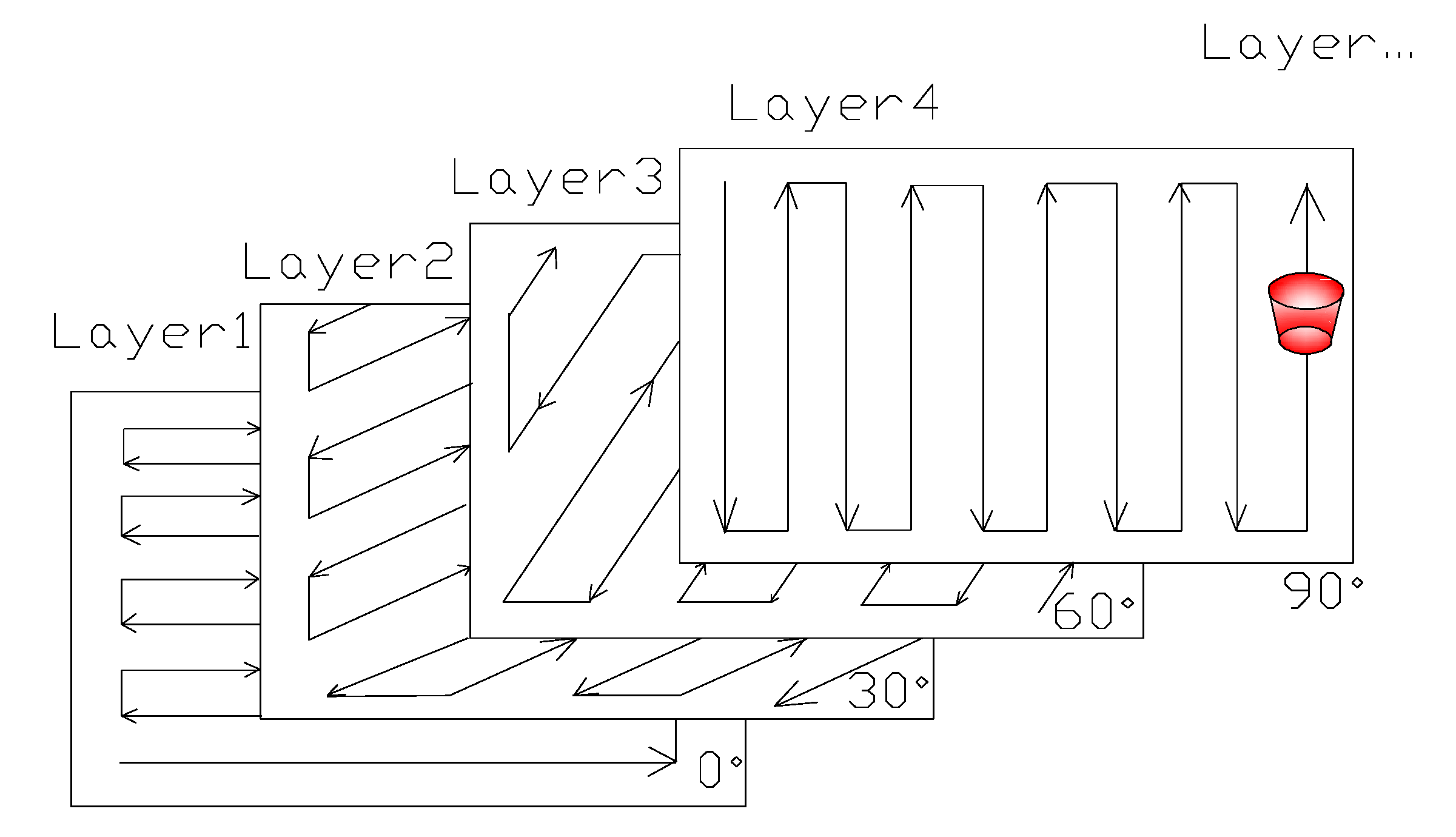
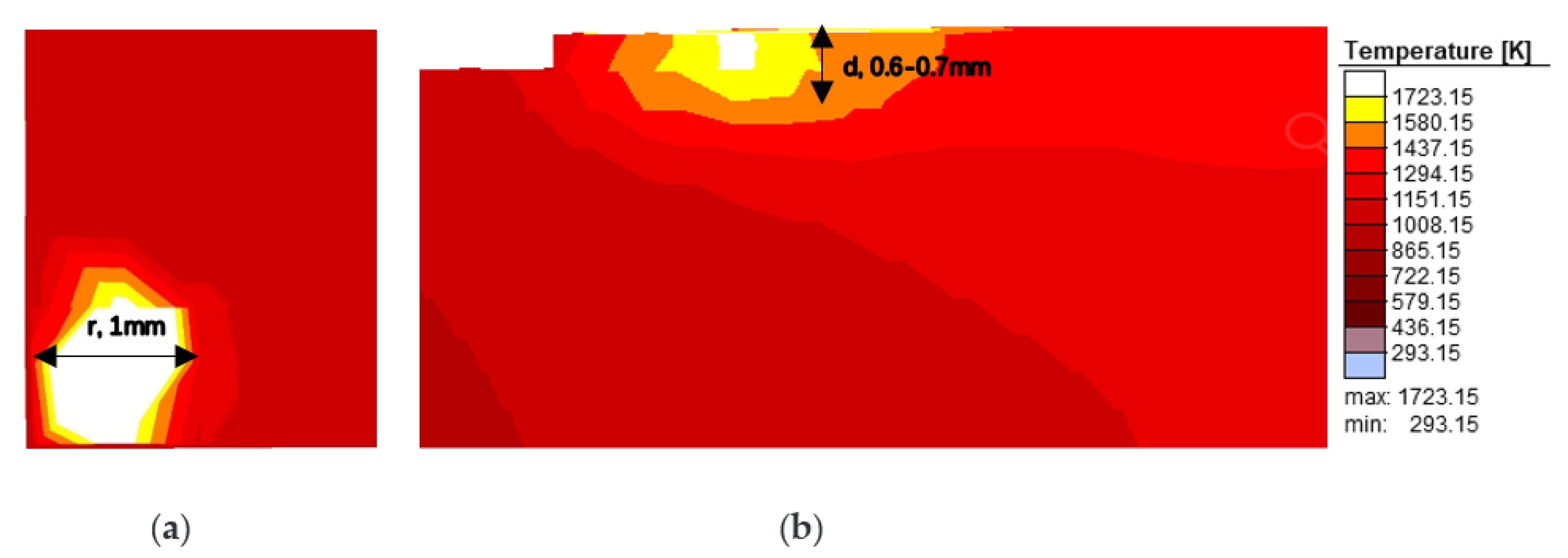


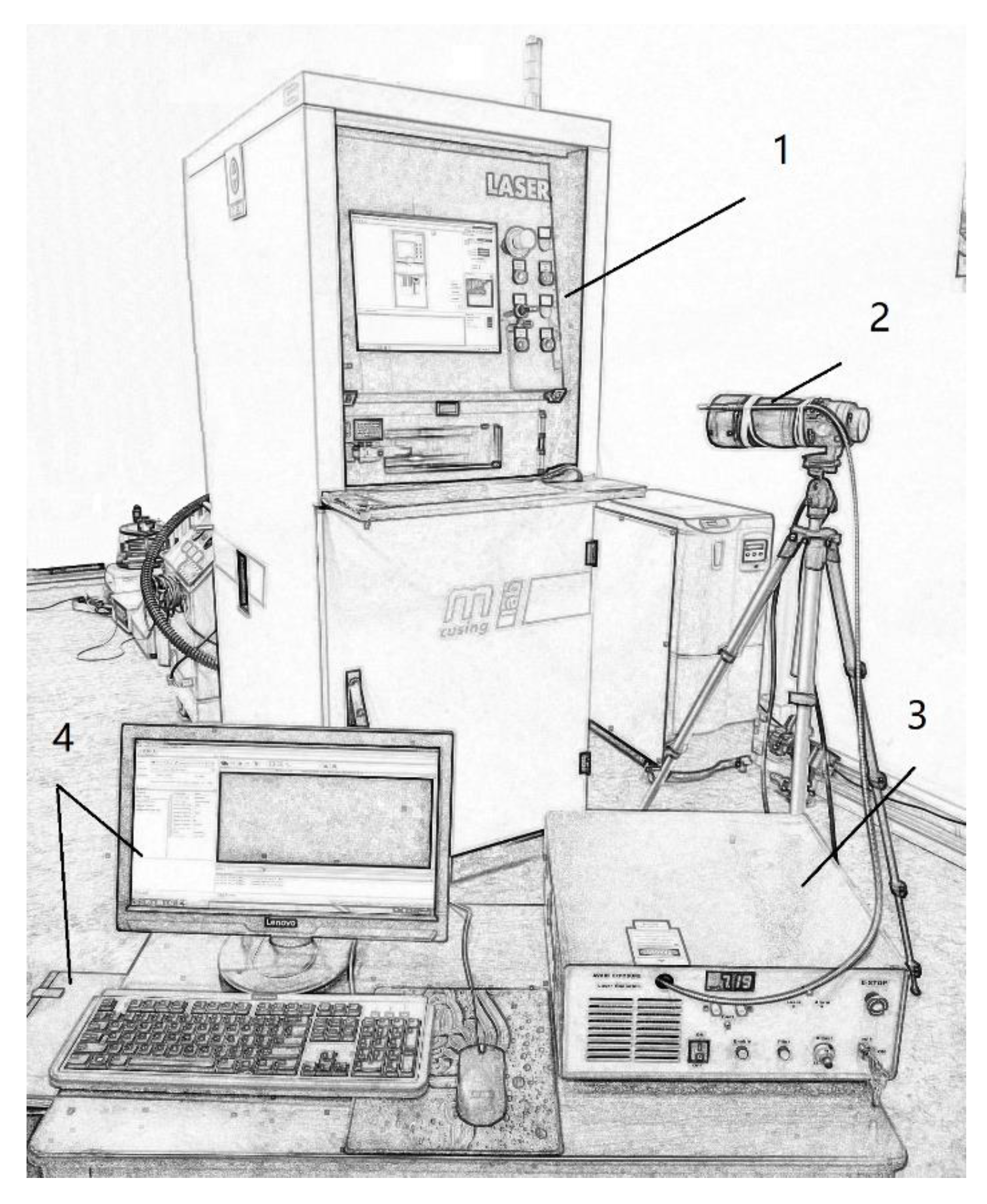
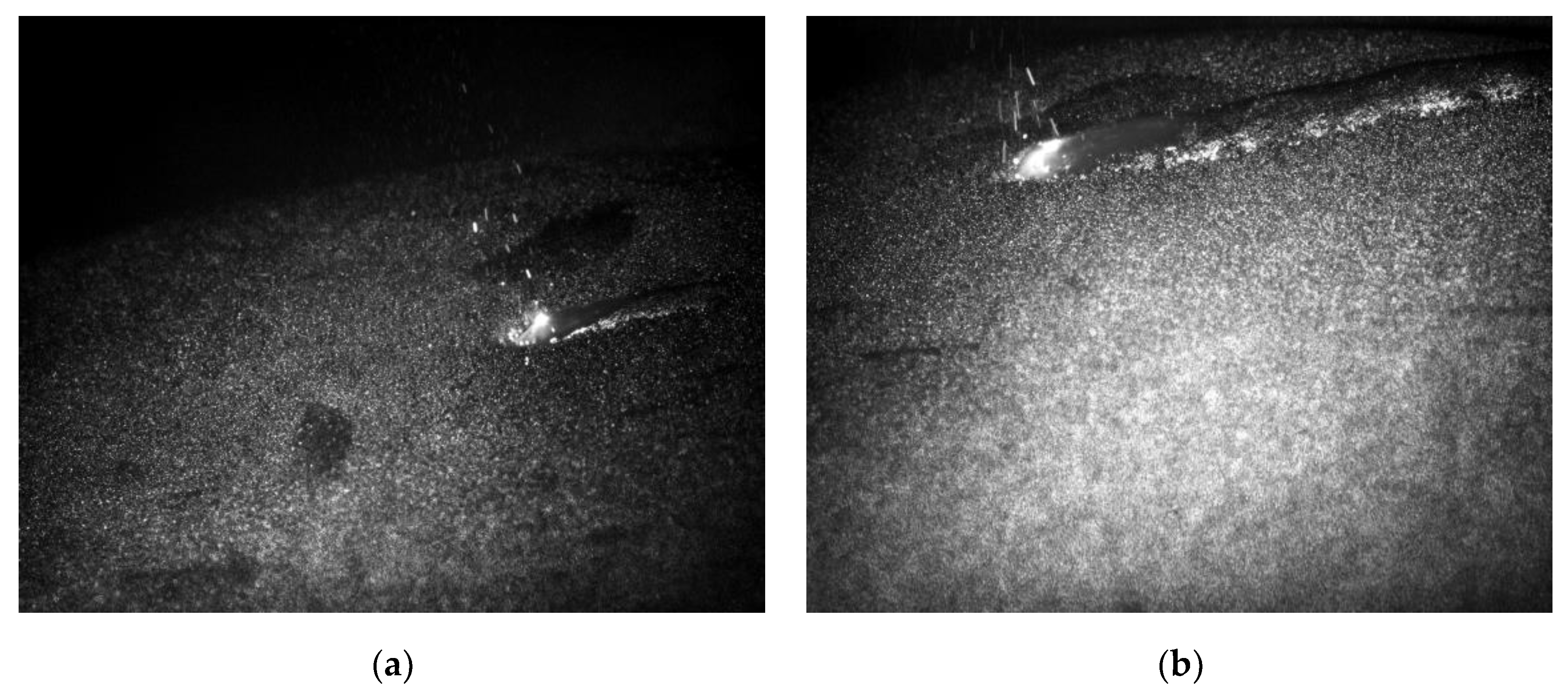



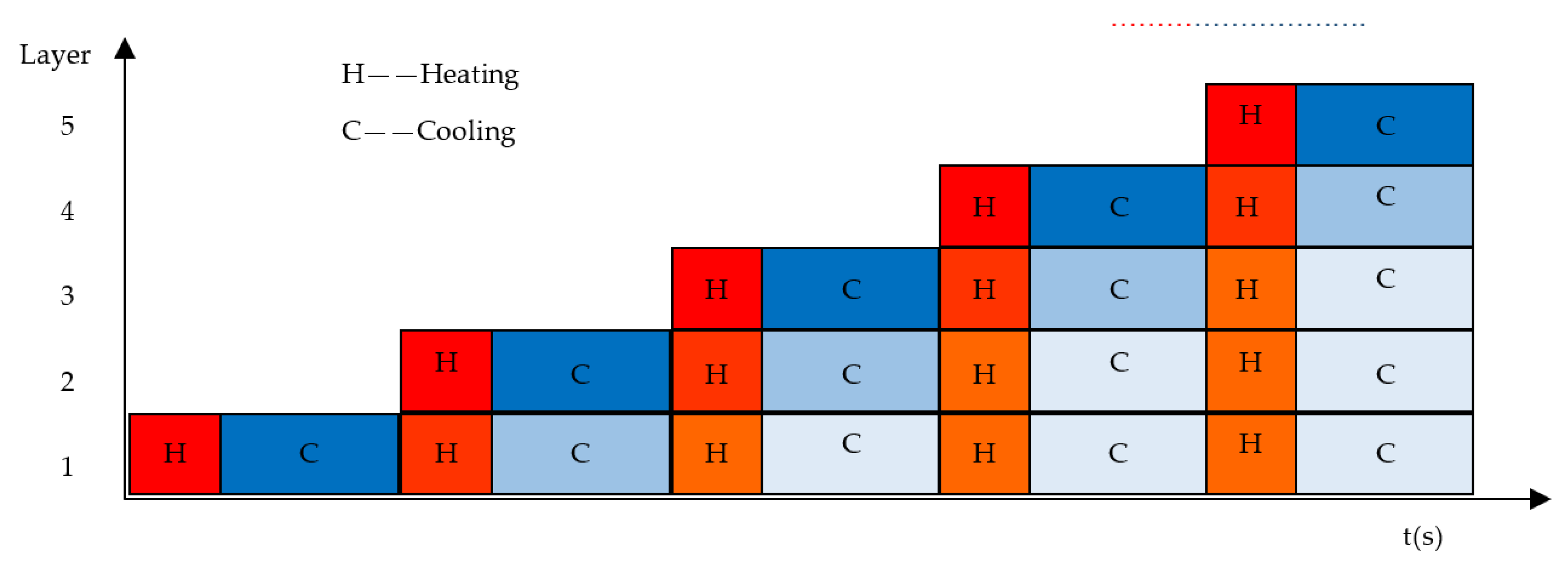
© 2020 by the authors. Licensee MDPI, Basel, Switzerland. This article is an open access article distributed under the terms and conditions of the Creative Commons Attribution (CC BY) license (http://creativecommons.org/licenses/by/4.0/).
Share and Cite
Bian, P.; Shao, X.; Du, J.; Ye, F.; Zhang, X.; Mu, Y. Simulation of the Evolution of Thermal Dynamics during Selective Laser Melting and Experimental Verification Using Online Monitoring. Sensors 2020, 20, 4451. https://doi.org/10.3390/s20164451
Bian P, Shao X, Du J, Ye F, Zhang X, Mu Y. Simulation of the Evolution of Thermal Dynamics during Selective Laser Melting and Experimental Verification Using Online Monitoring. Sensors. 2020; 20(16):4451. https://doi.org/10.3390/s20164451
Chicago/Turabian StyleBian, Peiying, Xiaodong Shao, Jingli Du, Fangxia Ye, Xiuping Zhang, and Yaozhao Mu. 2020. "Simulation of the Evolution of Thermal Dynamics during Selective Laser Melting and Experimental Verification Using Online Monitoring" Sensors 20, no. 16: 4451. https://doi.org/10.3390/s20164451
APA StyleBian, P., Shao, X., Du, J., Ye, F., Zhang, X., & Mu, Y. (2020). Simulation of the Evolution of Thermal Dynamics during Selective Laser Melting and Experimental Verification Using Online Monitoring. Sensors, 20(16), 4451. https://doi.org/10.3390/s20164451




